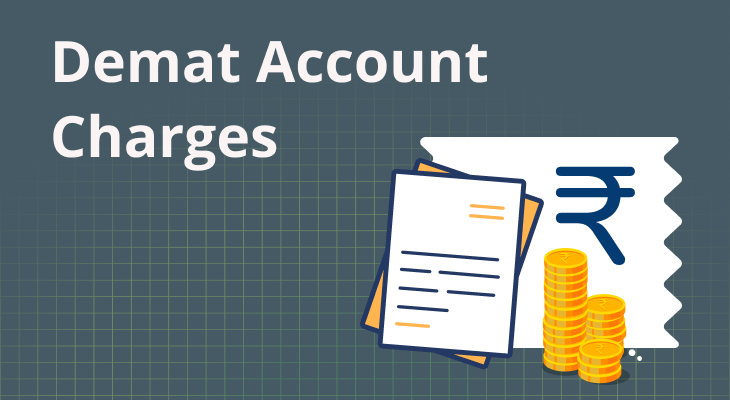When you are looking to purchase any product/ service, it is important to evaluate the available options on various parameters, ranging from features to price. A demat account is no different. Having a functional demat account is essential to purchase and hold securities in the securities market.
You can open a demat account online through a straightforward process. In this article, we shall delve into how you can open a demat account and what are the different types of demat account charges you should look out for.
How To Open A Demat Account
Should you wish to invest in the securities market, you must have a demat account and a trading account. You can open a demat account online if you are eligible to do so. All individuals above the age of 18 years can open a demat account in India.
Various types of entities are also eligible to open demat account, for instance, companies and partnership firms. Demat accounts can also be opened in the name of minors by their parents or guardians, but such accounts have limited features and can be operated by the latter.
In order to open a demat account online in India, you must follow the steps mentioned below.
- Select a depository participant with a high degree of market credibility and suitable demat account offerings.
- Visit the official website of the selected depository participant and locate the form to open a demat account.
- Complete the online demat account opening form.
- Submit the required documents (for instance, proof of income, PAN card, proof of address, bank account details, and recent passport size photographs) along with the demat account opening form.
- Complete the process of In-person Verification online.
- Receive your demat account credentials from your DP and access the account.
Key Categories Of Demat Account Charges
While selecting a depository participant or stock broker to open a demat account with, you should be mindful of various factors, one of which is the demat account charges.
Demat accounts entail a wide array of charges, levied at different stages of the operation of the account.
While some charges (account opening charges) have to be paid at the time of account opening, others must be paid as and when they fall due. Here are the major categories of demat account charges.
- Account Opening Charges
This type of demat account charges has to be paid right at the onset. Should you wish to avoid this charge, you can opt for a free demat account.
- Transaction Charges
Each transaction in the securities market entails certain transaction charges, which could either be a flat fee or a percentage of the volume of the transaction. You can check with your DP their mode of calculating transaction charges.
- Custodian Charges
Depository participants serve as protectors of your demat holdings. As such, they may charge a custodian fees for the service, which is termed as Demat Account Custodian Charges.
- Account Reactivation Charges
If there is no activity in your demat account for more than 12 months, it can be categorised as a dormant account. Consequently, you would be required to reactivate the account to use it again. The aforementioned account reactivation can entail a fee. This type of demat account charges is referred to as Account Reactivation Charges.
- Annual Maintenance Charges
Another prominent demat account charge is Annual Maintenance Charges. This fee is levied by depository participants for the yearly holding and maintenance of demat accounts. If you wish to avoid this demat account charge, you can open a Basic Services Demat Account (demat accounts with total holdings higher than Rs. 50,000 shall attract an Annual Maintenance Charge).
The Bottomline
You must check the schedule of demat account charges before finalising a demat account offering and completing the account opening process. It is prudent to choose a demat account that not only aligns with your trading requirements but also falls within your budget.







